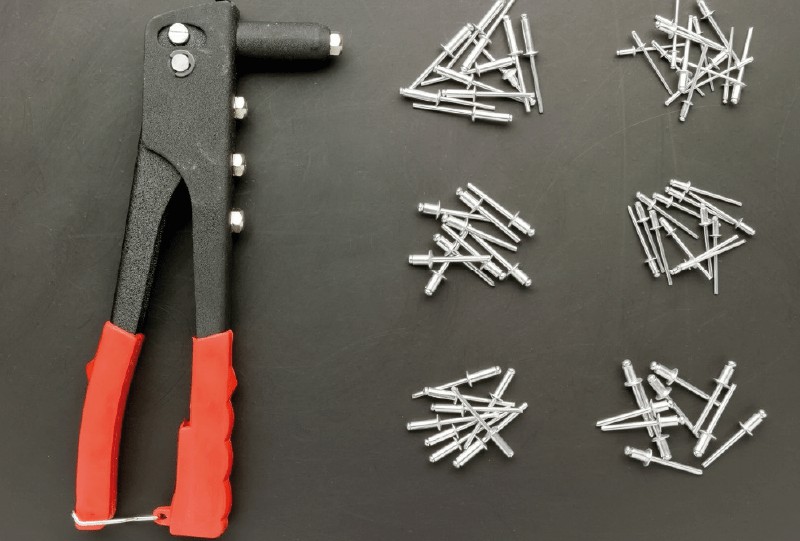What is a riveter and how is it used?
The riveter is a tool that, although it may not be as well known to some, is extremely useful and versatile in many DIY and manual projects. In this post we will explain what a riveter is, what it is used for and how to use it correctly in your projects. After learning about its uses and benefits, you will probably include it in your tool kit.

Definition and uses of the riveter
A riveter is a hand tool used to join two pieces in a fixed manner by using rivets. At first glance it may look similar to a pair of pliers, although it is generally larger and more robust. Its design allows pressure to be applied so that the rivets fix two pieces, whether they are made of the same or different materials.
Rivets, which are the pieces in charge of making the joint, come in various sizes. To choose the right one, it is necessary to know the size of the holes in the pieces you are going to join and the thickness of the material. Rivets can be made of metal or other light materials, which allows you to work with a wide range of surfaces, from metal to fabrics.
Precautions when using a riveter
Although the riveter is an easy-to-use tool, it is important to take certain precautions to avoid accidents. When using a riveter, you need to be careful with the pressure you apply, as you could hurt yourself if you don't do it correctly. That's why it's always advisable to wear protective gloves and safety glasses, as sometimes metal shavings from the rivets can fly off and cause injuries.
How to use a riveter: step by step
1. Protection before you start
Before you start using the riveter, make sure you protect yourself with gloves and safety glasses. This will prevent any debris from the rivets or small parts from causing damage to your hands or eyes.
2. Position the pieces to be joined
The next step is to make the holes in the pieces you want to join. These holes must match exactly so that the rivet can join the two parts. You can make the holes with a tool suitable for the material, such as a drill or a punch.
3. Load the rivet gun with the rivet
Hold the rivet gun in one hand and pull the trigger to open the arms of the tool. Place your chosen rivet into the back of the rivet gun and make sure it is seated properly before releasing the trigger. If it is seated properly, the rivet should stay in place without any problem.
4. Place the rivet in the holes
Insert the head of the rivet through the holes of the two pieces you want to join. Pull the handle of the rivet gun firmly until you feel resistance and release the handle. You will hear a small click, indicating that the rivet is properly seated and the pieces have been joined.
Common Uses for Riveters
Riveters are used on a wide variety of materials, from metal to fabric, making them an extremely versatile tool. They are ideal for projects that require a strong, fixed joint, such as assembling metal structures or reinforcing textile materials.
Now that you know how to use a riveter and what it is used for, you will see that using it is easier than it seems. Just always remember to work with caution to avoid accidents, and you will enjoy a useful tool that can help you with multiple DIY projects.





Our customers trust us
Opinions of our clients
Receive our news